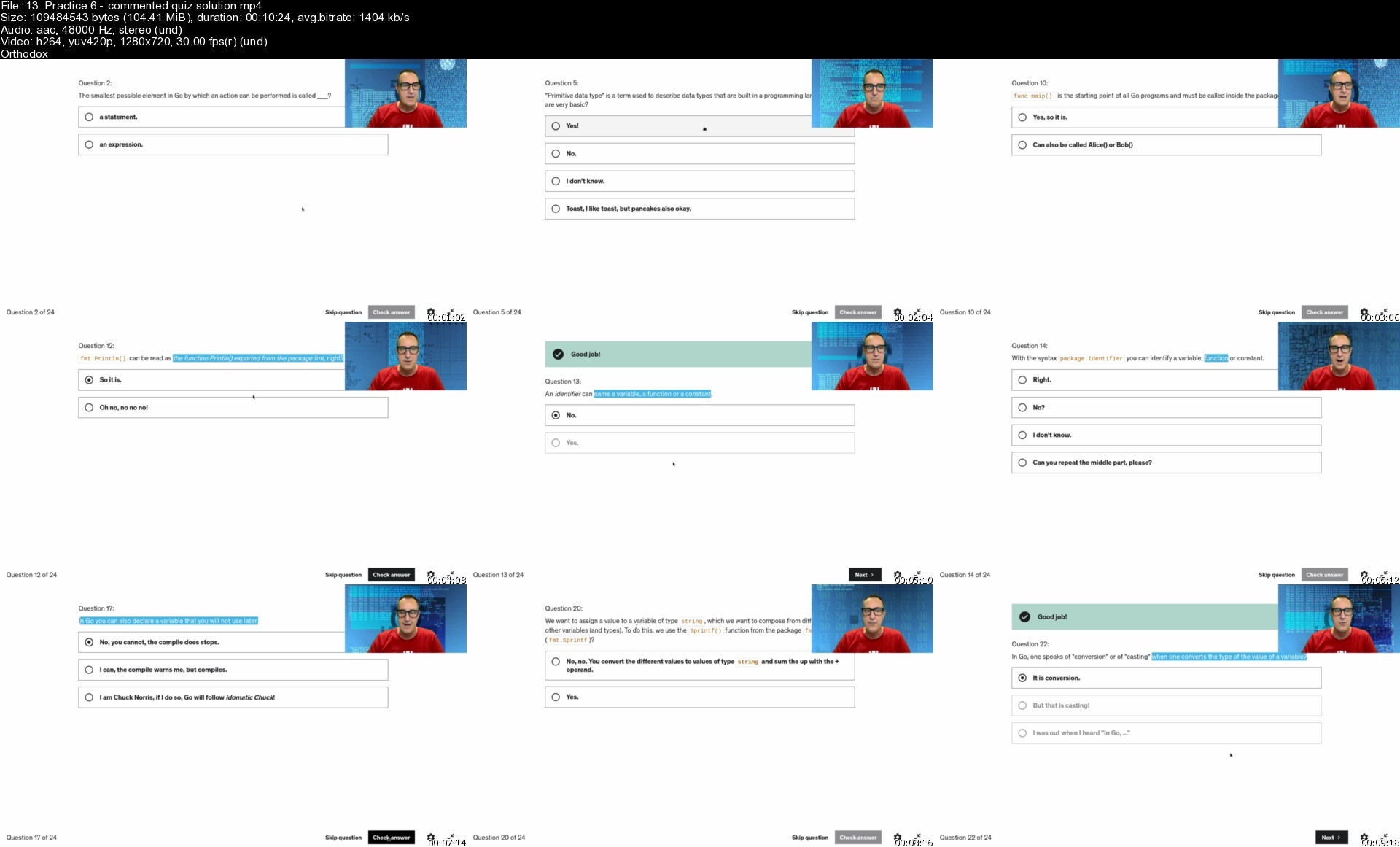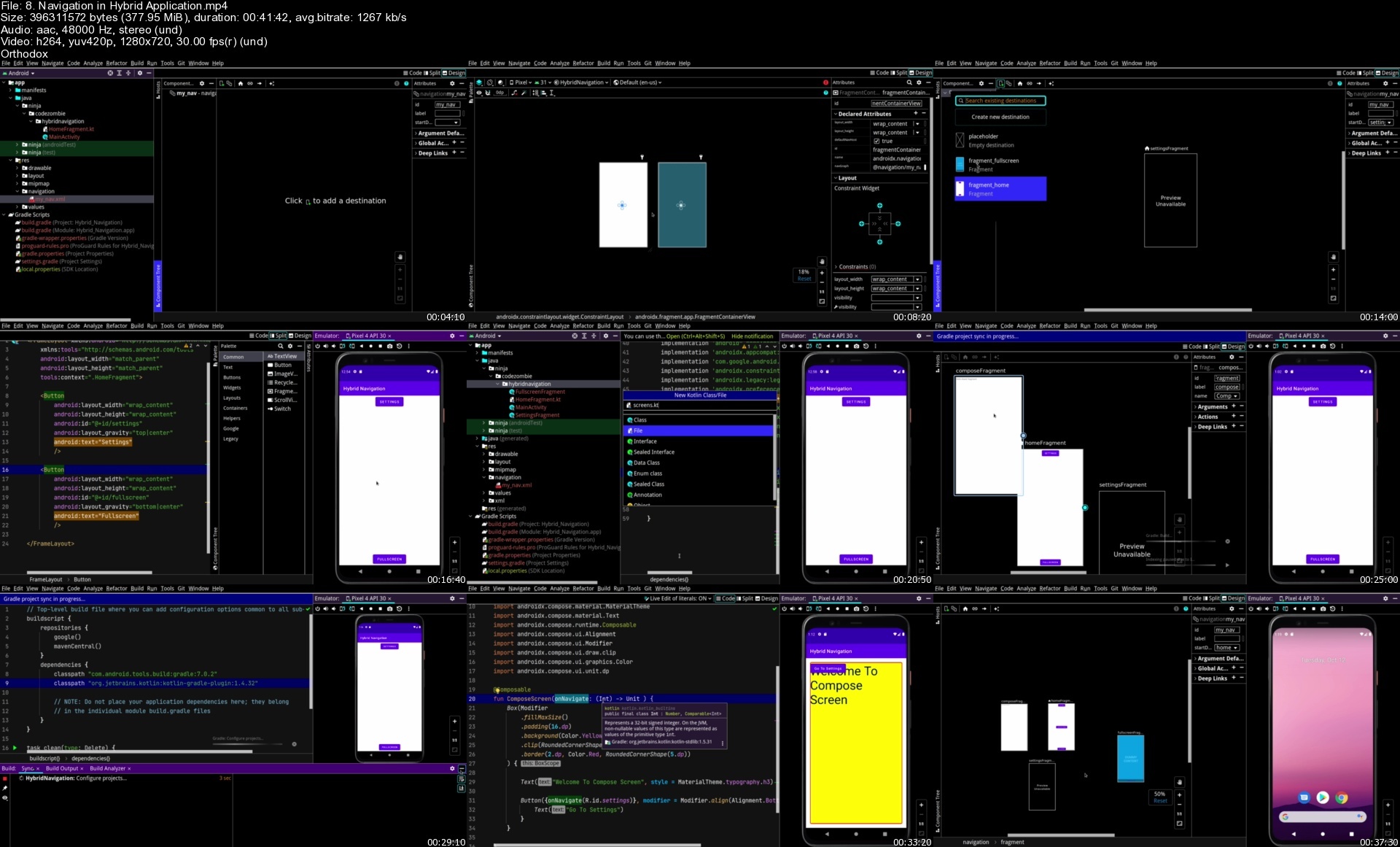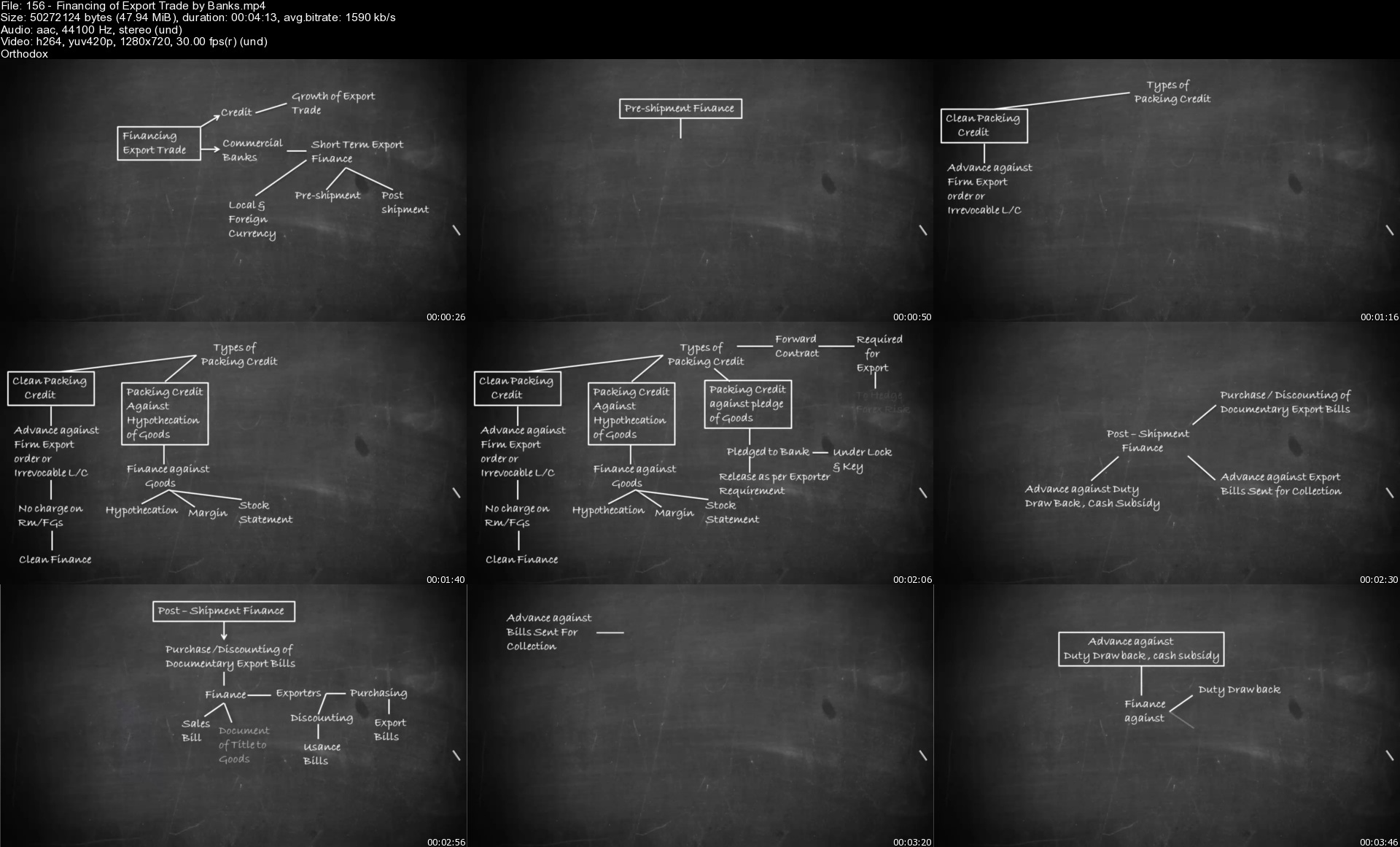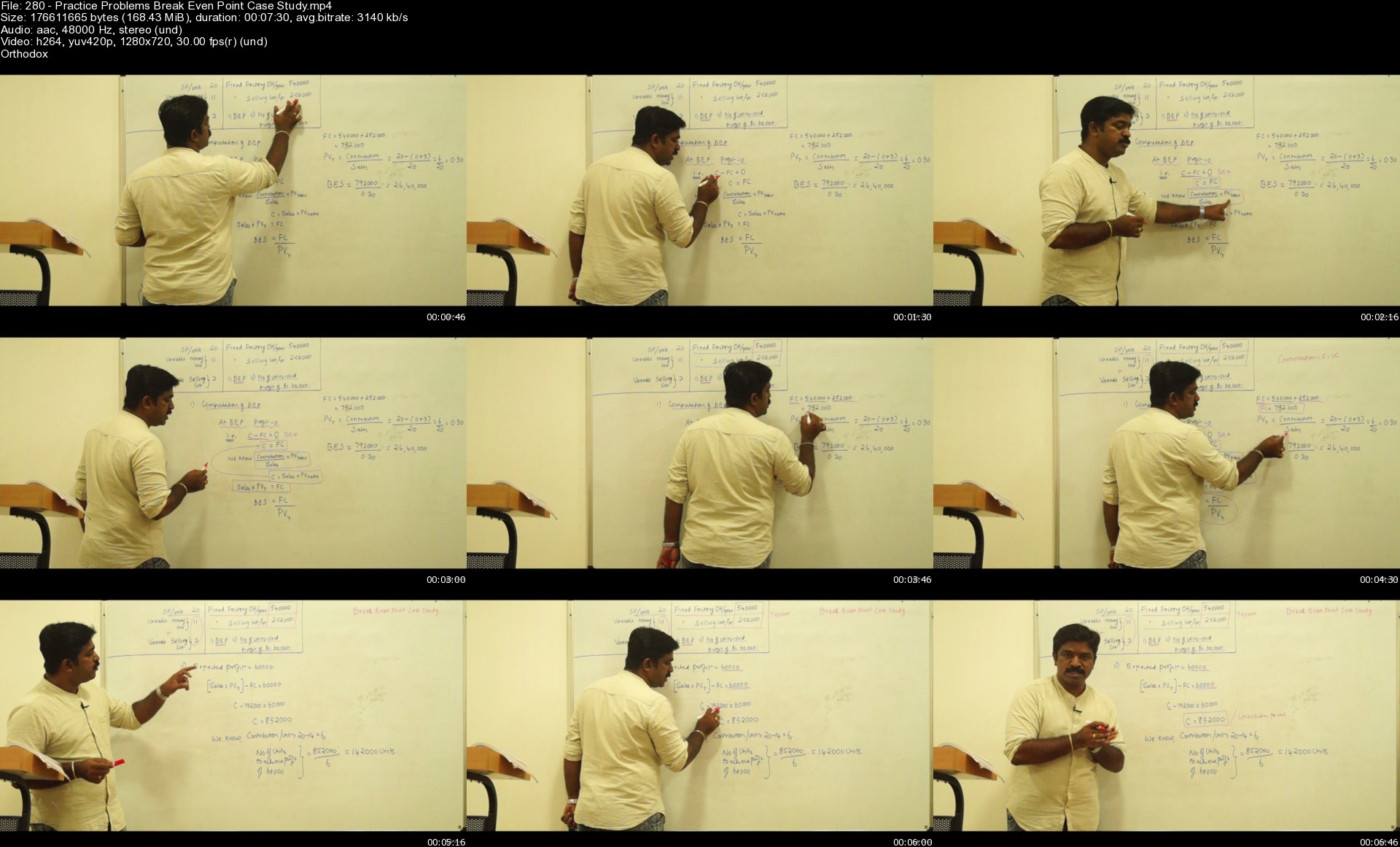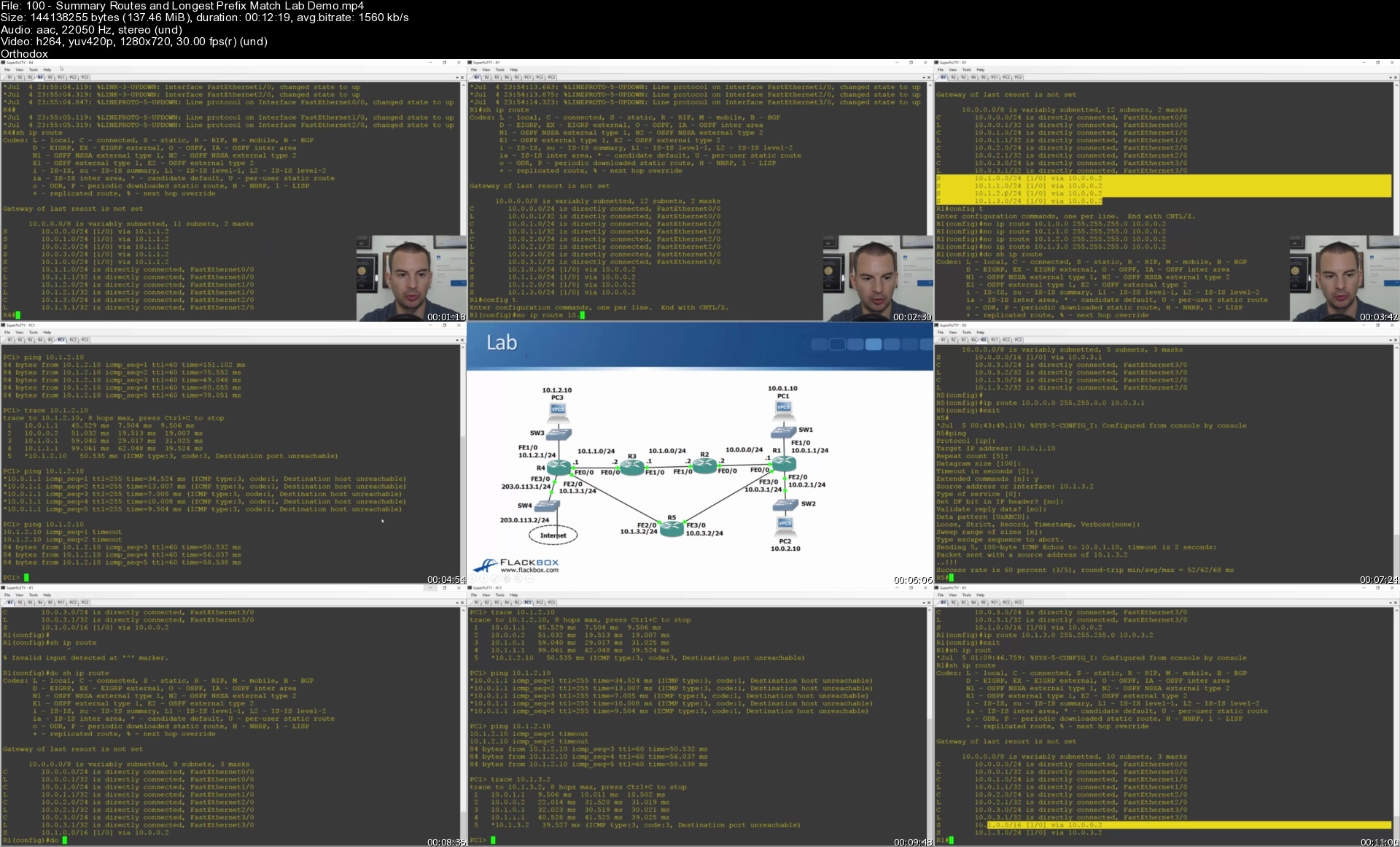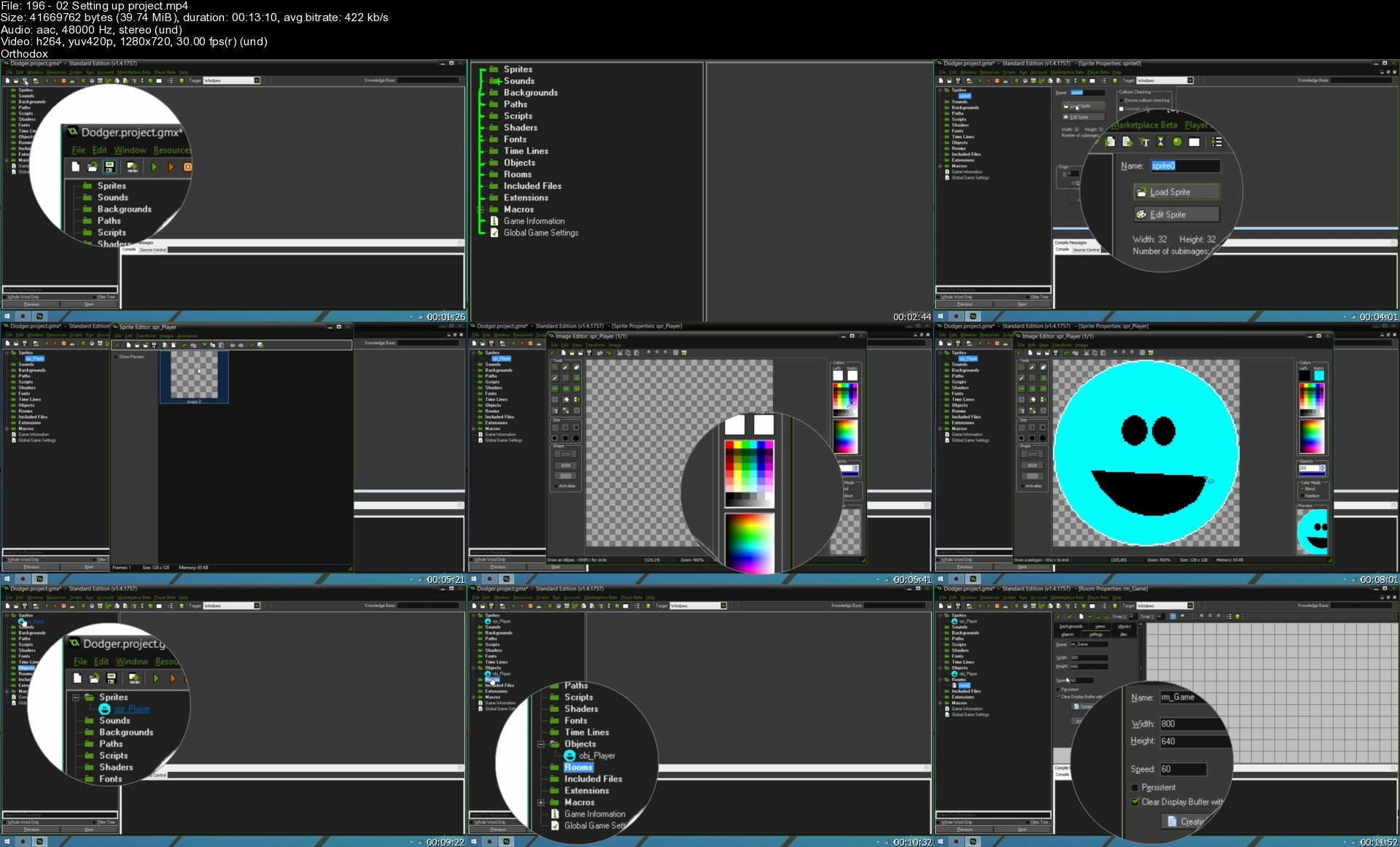Bank Audit A Complete Study

Bank Audit A Complete Study
Last updated 6/2021
MP4 | Video: h264, 1280x720 | Audio: AAC, 44.1 KHz
Language: English | Size: 5.19 GB | Duration: 11h 28m
One Shot Course to Learn Bank Audit
What you'll learn
Legal Framework for Bank Audit
How to approach Bank Audit
Requirements
Basic knowledge of Auditing
Description
What is a Bank audit?It is a procedure performed by an auditor appointed by RBI and ICAI to verify the financial statements of the banking institutions and to verify whether the bank is complying with the applicable regulatory framework or not.It is not something which you will regularly undertake all the days of a year. Instead, for most of the auditors and audit firms, it's a one-time exercise in a year and as a result, knowledge level on the critical areas for most of the auditors will be limited.So, several auditors and audit firms have to update themselves with the latest guidelines and provisions applicable by attending various seminars and by reading various publications. However, many have felt the need for a one-shot course on Bank Audit and they wanted it to be handy, available in an app or website so they can prepare themselves for the audit upfront and during the course of the audit, they can refer to guidance materials.All their wishes are going to materialize with this course!Welcome to your course Bank Audit A Complete StudyIn this course, you will get to learn about1) What is Bank Audit?2) Who is eligible for Bank Audit?3) How to Approach a Bank Audit?4) How Auditors are appointed for Banking Companies?5) How to conduct an audit of a bank?6) Advances7) Fund Based Working Capital Facility (Concepts & Case Studies)8) Non - Fund Based Working Capital Facilities9) Term Loan (Concepts & Case Studies)10) Mode OF Creation Of Security11) Non-Performing Asset12) Income Recognition13) Willful Defaulter14) Audit of Advances15) Consortium Advances16) Audit of Revenue Items17) Audit of Expenses18) Verification of Cash Balance19) Verification of Cash Balance20) Verification of Investments21) Verification of Bills Purchased / Discounted22) Fixed Asset & Other Assets VerificationThis course is structured in a self-paced learning style. Requesting you to use your headphones for a better learning experience. Also, keep a notepad & pen alongside to take keynotes.See you inside the course!Note: This course is prepared based on audit guidelines applicable to Banks India.
Overview
Section 1: Introduction
Lecture 1 Introduction
Lecture 2 Different types of Bank
Lecture 3 RBI - Responsibilities & Functions
Lecture 4 Bank Audit Reports issued by Central Statutory Auditors
Lecture 5 Glimpse of Banking Accounting System
Lecture 6 Bank Audit Approach
Section 2: Selection of Auditor for Public & Private Sector Banks
Lecture 7 Selection of Auditor for Public Sector Bank
Lecture 8 Eligibility Norms for empanelment of audit firms as statutory auditors of Public
Lecture 9 Procedure for Appointment of Auditor for Banking Company
Section 3: How to conduct audit of bank
Lecture 10 How to conduct audit of bank or its branches - Part 1
Lecture 11 How to conduct audit of bank or its branches - Part 2
Lecture 12 How to conduct audit of bank or its branches - Part 3
Lecture 13 How to conduct audit of bank or its branches - Part 4
Lecture 14 How to conduct audit of bank or its branches - Part 5
Section 4: Advances
Lecture 15 What are Advances?
Lecture 16 Classificiation of Advances
Section 5: Fund Based Working Capital Facility (Concepts & Case Studies)
Lecture 17 Working Capital Loans
Lecture 18 Working Capital Cycle
Lecture 19 Tandon Committee Recommendations on Working Capital Assessment
Lecture 20 Working Capital Assessment as per Nayak Committee
Lecture 21 Review of Assessed Bank Finance
Lecture 22 Working Capital Cycle Analysis
Lecture 23 Understanding Cash Credit
Lecture 24 Cash Credit Example
Lecture 25 Cash Credit
Lecture 26 Assessment of Cash Credit - ABF Method
Lecture 27 Assessment of Cash Credit - Conservative Method
Lecture 28 Drawing Power Computation from Stock Statement
Lecture 29 Assessment of CC Book Debts
Section 6: Non - Fund Based Working Capital Facilities
Lecture 30 What and Why of Non Fund Based Credit Facilities?
Lecture 31 Letter of Credit
Lecture 32 Documents involved in Letter of Credit
Lecture 33 Types of Letter of Credit
Lecture 34 General aspects related to LC
Lecture 35 Assessment of Letter of Credit
Lecture 36 What is Bank Guarantee?
Lecture 37 Types of Bank Guarantee
Lecture 38 Bid Bond Guarantee
Lecture 39 Advance Payment Guarantee
Lecture 40 Appraisal and Assessment o BG Limits
Lecture 41 Maintenance bond / guarantee
Lecture 42 What is Retention Money Guarantee?
Lecture 43 What is Advance payment Guarantee?
Section 7: Term Loan (Concepts & Case Studies)
Lecture 44 Term Loan Appraisal By Banks
Lecture 45 Term Loan - Nature of Project
Lecture 46 What is TEV Study?
Lecture 47 Technical Viability of Project
Lecture 48 Financial Viability of Project
Lecture 49 Economic Viability of Project
Lecture 50 Commercial Viability of Project
Lecture 51 Managerial aspects of Project
Lecture 52 Compliance aspects of Project
Lecture 53 Cost of Project and Means of Finance under Term Loan Appraisal
Lecture 54 Land Cost and related inputs under cost of Project - Term Loan Appraisal
Lecture 55 Building Cost and related inputs under cost of Project -Term Loan Appraisal
Lecture 56 Plant and Machinery Cost and related inputs under cost of Project -Term Loan App
Lecture 57 Technical Know how and related inputs under cost of Project -Term Loan Appraisal
Lecture 58 Preliminary Expenses and related inputs under cost of Project -Term Loan Apprais
Lecture 59 Pre-operative Expenses and related inputs under cost of Project -Term Loan Appra
Lecture 60 Provision for Contingencies and related inputs under cost of Project -Term Loan
Lecture 61 Working Capital Margin and related inputs under cost of Project -Term Loan Appra
Lecture 62 General aspects related to estimation of Cost of Project - Term Loan Appraisal
Lecture 63 Introduction of Sources of Finance - Term Loan Appraisal
Lecture 64 Share Capital as source of Finance - Term Loan Appraisal
Lecture 65 Internal Accruals as source of Finance - Term Loan Appraisal
Lecture 66 Subsidies as source of Finance - Term Loan Appraisal
Lecture 67 Debenture as source of Finance - Term Loan Appraisal
Lecture 68 Term Loan as source of Finance - Term Loan Appraisal
Lecture 69 Unsecured Loans as source of Finance - Term Loan Appraisal
Lecture 70 Project Implementation Schedule
Lecture 71 Production Factors - Term Loan Appraisal
Lecture 72 Manufacturing Process - Term Loan Appraisal
Lecture 73 Other Production Factors - Term Loan Appraisal
Lecture 74 DSCR Computation in Term Loan
Lecture 75 Analysis of DSCR (Gross Average & Net Average)
Lecture 76 Analysis of DSCR 2 (Gross Average & Net Average)
Lecture 77 Term Loan Eligibility Calculation
Lecture 78 FOIR Computation in Term Loan
Lecture 79 Project Viability - Case Study
Section 8: Mode OF Creation Of Security
Lecture 80 Introduction to Charges
Lecture 81 What is Charge and its purpose?
Lecture 82 What are the Features of Charge?
Lecture 83 What are the Types of Security?
Lecture 84 What do we mean by Lien?
Lecture 85 What is Particular Lien?
Lecture 86 What is General Lien?
Lecture 87 What is Negative Lien?
Lecture 88 Right of Set Off for Bankers
Section 9: Non Performing Asset
Lecture 89 Introduction to NPA Management
Lecture 90 Credit Monitoring
Lecture 91 NPA Reasons - Business Cycle
Lecture 92 NPA Reasons - Ambitious Cash Flow Projection
Lecture 93 NPA Reasons - Diversion of Funds
Lecture 94 NPA Reasons - Misuse of Funds
Lecture 95 NPA Reasons - Over dependence on Loan & Pledge of Shares
Lecture 96 NPA Reasons - Expansion & Wilful Default
Lecture 97 NPA Reasons - Misselling & Inadequate Credit
Lecture 98 NPA Management Policy - Introduction
Lecture 99 NPA - Trigger by SMA
Lecture 100 NPA - Monitoring Plans, OTS, Write Off
Lecture 101 Non Performing Asset ?
Lecture 102 What is Out of Order Account?
Lecture 103 Sick Units
Lecture 104 Procedure for rehabilitation of sick companies under bankruptcy code
Lecture 105 MSME Sick Units
Section 10: Income Recognition
Lecture 106 Income Recognition Policy for NPA
Lecture 107 Asset Classification
Lecture 108 Guidelines for NPA Classification - Part 1
Lecture 109 Guidelines for NPA Classification - Part 2
Lecture 110 Guidelines for NPA Classification - Part 3
Lecture 111 NPA Classification for loans under Consortium
Lecture 112 NPA Classification for Projects under Implementation
Lecture 113 Project Loans for Infrastructure Sector - NPA Norms
Lecture 114 Project Loans for Non-Infrastructure Sector - NPA Norms
Lecture 115 Project Loans for Commercial Real Estate - NPA Norms
Lecture 116 Other Issues in Project Loans
Lecture 117 Income Recognition on Project Loans
Lecture 118 NPA Provisioning Norms
Section 11: Willful Defaulter
Lecture 119 Who is Willfull Defaulter in Banking Context?
Lecture 120 What is Diversion of Funds in Banking Context?
Lecture 121 What is Siphoning of Funds in Banking Context?
Lecture 122 What are the penal measures for Wilful Default?
Lecture 123 Mechanism for identification of Wilful Defaulters
Section 12: Audit of Advances
Lecture 124 Audit of Advances
Lecture 125 Evaluaiton of Internal Control over Advances
Lecture 126 Accounts with erosion in Value of Security
Section 13: Consortium Advances
Lecture 127 Advances under Consortium
Lecture 128 Drawing Power Allocation in Consortium Cash Credit Account
Section 14: Audit of Revenue Items
Lecture 129 Introduction to Audit of Revenue Items
Lecture 130 Audit Approach & Procedures related to Revenue Items
Lecture 131 Reversal of Income
Lecture 132 Income from Investments
Section 15: Audit of Expenses
Lecture 133 Introduction to Audit of Expenses
Lecture 134 Interest Expenses: Audit Approach & Procedures
Lecture 135 Audit Approach for Operating Expenses
Lecture 136 Audit Approach for Provisions and Contingencies
Section 16: Verification of Cash Balance
Lecture 137 Verification of Cash Balance - Part 1
Lecture 138 Verification of Cash Balance - Part 2
Lecture 139 Balance with RBI / SBI / Other Banks - Part 1
Lecture 140 Balance with RBI / SBI / Other Banks - Part 2
Section 17: Verification of Cash Balance
Lecture 141 Money @ Call & Short Notice
Section 18: Verification of Investments
Lecture 142 Investments
Section 19: Verification of Bills Purchased / Discounted
Lecture 143 Bills Purchased & Discounted
Section 20: Miscellaneous Areas
Lecture 144 Miscellaneous Matters related to Advances
Lecture 145 Drawing Power related issues
Section 21: Fixed Asset & Other Assets Verification
Lecture 146 Fixed Asset Verification
Lecture 147 Balance Sheet Disclosure
Lecture 148 Other Assets
Lecture 149 Audit Approach for Fixed Assets
Lecture 150 Audit Approach for Premises
Lecture 151 Audit Approach for Other Fixed Assets
Lecture 152 Impairment of Assets
Lecture 153 Interest Accrued
Lecture 154 Tax paid in advance & deducted at sources
Lecture 155 Stationery & Stamps
Lecture 156 Non-Banking Assets acquired in Satisfaction of Claims
Lecture 157 Non-Interest Bearing Staff Advances
Lecture 158 Security Deposits
Lecture 159 Suspense Account
Section 22: Borrowings & Deposits
Lecture 160 Borrowings
Lecture 161 Deposits
Lecture 162 Demand Deposits
Lecture 163 Term Deposits
Lecture 164 Recurring Deposits
Lecture 165 Cash Certificate and Certificate of Deposit
Section 23: Last Section
Lecture 166 Bonus Lecture
Chartered Accountants,CA Articleship Students,Audit Executives,Audit Assistants,Article Clerks,Audit Managers,Bank Executives,Bank Managers,Concurrent Auditors
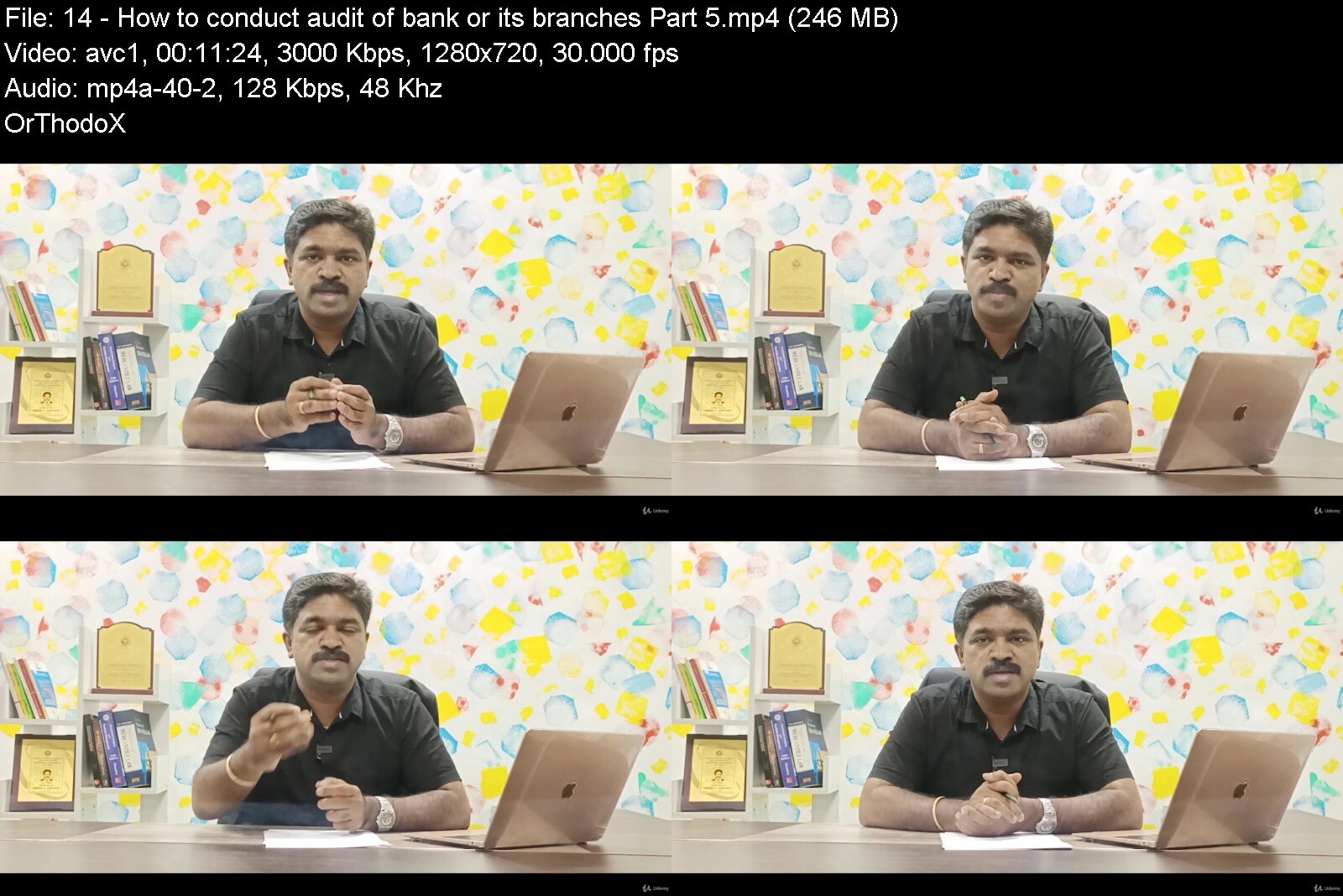
Download from RapidGator
Download from Keep2Share
Download from DDownload

Bank Audit A Complete Study
Last updated 6/2021
MP4 | Video: h264, 1280x720 | Audio: AAC, 44.1 KHz
Language: English | Size: 5.19 GB | Duration: 11h 28m
One Shot Course to Learn Bank Audit
What you'll learn
Legal Framework for Bank Audit
How to approach Bank Audit
Requirements
Basic knowledge of Auditing
Description
What is a Bank audit?It is a procedure performed by an auditor appointed by RBI and ICAI to verify the financial statements of the banking institutions and to verify whether the bank is complying with the applicable regulatory framework or not.It is not something which you will regularly undertake all the days of a year. Instead, for most of the auditors and audit firms, it's a one-time exercise in a year and as a result, knowledge level on the critical areas for most of the auditors will be limited.So, several auditors and audit firms have to update themselves with the latest guidelines and provisions applicable by attending various seminars and by reading various publications. However, many have felt the need for a one-shot course on Bank Audit and they wanted it to be handy, available in an app or website so they can prepare themselves for the audit upfront and during the course of the audit, they can refer to guidance materials.All their wishes are going to materialize with this course!Welcome to your course Bank Audit A Complete StudyIn this course, you will get to learn about1) What is Bank Audit?2) Who is eligible for Bank Audit?3) How to Approach a Bank Audit?4) How Auditors are appointed for Banking Companies?5) How to conduct an audit of a bank?6) Advances7) Fund Based Working Capital Facility (Concepts & Case Studies)8) Non - Fund Based Working Capital Facilities9) Term Loan (Concepts & Case Studies)10) Mode OF Creation Of Security11) Non-Performing Asset12) Income Recognition13) Willful Defaulter14) Audit of Advances15) Consortium Advances16) Audit of Revenue Items17) Audit of Expenses18) Verification of Cash Balance19) Verification of Cash Balance20) Verification of Investments21) Verification of Bills Purchased / Discounted22) Fixed Asset & Other Assets VerificationThis course is structured in a self-paced learning style. Requesting you to use your headphones for a better learning experience. Also, keep a notepad & pen alongside to take keynotes.See you inside the course!Note: This course is prepared based on audit guidelines applicable to Banks India.
Overview
Section 1: Introduction
Lecture 1 Introduction
Lecture 2 Different types of Bank
Lecture 3 RBI - Responsibilities & Functions
Lecture 4 Bank Audit Reports issued by Central Statutory Auditors
Lecture 5 Glimpse of Banking Accounting System
Lecture 6 Bank Audit Approach
Section 2: Selection of Auditor for Public & Private Sector Banks
Lecture 7 Selection of Auditor for Public Sector Bank
Lecture 8 Eligibility Norms for empanelment of audit firms as statutory auditors of Public
Lecture 9 Procedure for Appointment of Auditor for Banking Company
Section 3: How to conduct audit of bank
Lecture 10 How to conduct audit of bank or its branches - Part 1
Lecture 11 How to conduct audit of bank or its branches - Part 2
Lecture 12 How to conduct audit of bank or its branches - Part 3
Lecture 13 How to conduct audit of bank or its branches - Part 4
Lecture 14 How to conduct audit of bank or its branches - Part 5
Section 4: Advances
Lecture 15 What are Advances?
Lecture 16 Classificiation of Advances
Section 5: Fund Based Working Capital Facility (Concepts & Case Studies)
Lecture 17 Working Capital Loans
Lecture 18 Working Capital Cycle
Lecture 19 Tandon Committee Recommendations on Working Capital Assessment
Lecture 20 Working Capital Assessment as per Nayak Committee
Lecture 21 Review of Assessed Bank Finance
Lecture 22 Working Capital Cycle Analysis
Lecture 23 Understanding Cash Credit
Lecture 24 Cash Credit Example
Lecture 25 Cash Credit
Lecture 26 Assessment of Cash Credit - ABF Method
Lecture 27 Assessment of Cash Credit - Conservative Method
Lecture 28 Drawing Power Computation from Stock Statement
Lecture 29 Assessment of CC Book Debts
Section 6: Non - Fund Based Working Capital Facilities
Lecture 30 What and Why of Non Fund Based Credit Facilities?
Lecture 31 Letter of Credit
Lecture 32 Documents involved in Letter of Credit
Lecture 33 Types of Letter of Credit
Lecture 34 General aspects related to LC
Lecture 35 Assessment of Letter of Credit
Lecture 36 What is Bank Guarantee?
Lecture 37 Types of Bank Guarantee
Lecture 38 Bid Bond Guarantee
Lecture 39 Advance Payment Guarantee
Lecture 40 Appraisal and Assessment o BG Limits
Lecture 41 Maintenance bond / guarantee
Lecture 42 What is Retention Money Guarantee?
Lecture 43 What is Advance payment Guarantee?
Section 7: Term Loan (Concepts & Case Studies)
Lecture 44 Term Loan Appraisal By Banks
Lecture 45 Term Loan - Nature of Project
Lecture 46 What is TEV Study?
Lecture 47 Technical Viability of Project
Lecture 48 Financial Viability of Project
Lecture 49 Economic Viability of Project
Lecture 50 Commercial Viability of Project
Lecture 51 Managerial aspects of Project
Lecture 52 Compliance aspects of Project
Lecture 53 Cost of Project and Means of Finance under Term Loan Appraisal
Lecture 54 Land Cost and related inputs under cost of Project - Term Loan Appraisal
Lecture 55 Building Cost and related inputs under cost of Project -Term Loan Appraisal
Lecture 56 Plant and Machinery Cost and related inputs under cost of Project -Term Loan App
Lecture 57 Technical Know how and related inputs under cost of Project -Term Loan Appraisal
Lecture 58 Preliminary Expenses and related inputs under cost of Project -Term Loan Apprais
Lecture 59 Pre-operative Expenses and related inputs under cost of Project -Term Loan Appra
Lecture 60 Provision for Contingencies and related inputs under cost of Project -Term Loan
Lecture 61 Working Capital Margin and related inputs under cost of Project -Term Loan Appra
Lecture 62 General aspects related to estimation of Cost of Project - Term Loan Appraisal
Lecture 63 Introduction of Sources of Finance - Term Loan Appraisal
Lecture 64 Share Capital as source of Finance - Term Loan Appraisal
Lecture 65 Internal Accruals as source of Finance - Term Loan Appraisal
Lecture 66 Subsidies as source of Finance - Term Loan Appraisal
Lecture 67 Debenture as source of Finance - Term Loan Appraisal
Lecture 68 Term Loan as source of Finance - Term Loan Appraisal
Lecture 69 Unsecured Loans as source of Finance - Term Loan Appraisal
Lecture 70 Project Implementation Schedule
Lecture 71 Production Factors - Term Loan Appraisal
Lecture 72 Manufacturing Process - Term Loan Appraisal
Lecture 73 Other Production Factors - Term Loan Appraisal
Lecture 74 DSCR Computation in Term Loan
Lecture 75 Analysis of DSCR (Gross Average & Net Average)
Lecture 76 Analysis of DSCR 2 (Gross Average & Net Average)
Lecture 77 Term Loan Eligibility Calculation
Lecture 78 FOIR Computation in Term Loan
Lecture 79 Project Viability - Case Study
Section 8: Mode OF Creation Of Security
Lecture 80 Introduction to Charges
Lecture 81 What is Charge and its purpose?
Lecture 82 What are the Features of Charge?
Lecture 83 What are the Types of Security?
Lecture 84 What do we mean by Lien?
Lecture 85 What is Particular Lien?
Lecture 86 What is General Lien?
Lecture 87 What is Negative Lien?
Lecture 88 Right of Set Off for Bankers
Section 9: Non Performing Asset
Lecture 89 Introduction to NPA Management
Lecture 90 Credit Monitoring
Lecture 91 NPA Reasons - Business Cycle
Lecture 92 NPA Reasons - Ambitious Cash Flow Projection
Lecture 93 NPA Reasons - Diversion of Funds
Lecture 94 NPA Reasons - Misuse of Funds
Lecture 95 NPA Reasons - Over dependence on Loan & Pledge of Shares
Lecture 96 NPA Reasons - Expansion & Wilful Default
Lecture 97 NPA Reasons - Misselling & Inadequate Credit
Lecture 98 NPA Management Policy - Introduction
Lecture 99 NPA - Trigger by SMA
Lecture 100 NPA - Monitoring Plans, OTS, Write Off
Lecture 101 Non Performing Asset ?
Lecture 102 What is Out of Order Account?
Lecture 103 Sick Units
Lecture 104 Procedure for rehabilitation of sick companies under bankruptcy code
Lecture 105 MSME Sick Units
Section 10: Income Recognition
Lecture 106 Income Recognition Policy for NPA
Lecture 107 Asset Classification
Lecture 108 Guidelines for NPA Classification - Part 1
Lecture 109 Guidelines for NPA Classification - Part 2
Lecture 110 Guidelines for NPA Classification - Part 3
Lecture 111 NPA Classification for loans under Consortium
Lecture 112 NPA Classification for Projects under Implementation
Lecture 113 Project Loans for Infrastructure Sector - NPA Norms
Lecture 114 Project Loans for Non-Infrastructure Sector - NPA Norms
Lecture 115 Project Loans for Commercial Real Estate - NPA Norms
Lecture 116 Other Issues in Project Loans
Lecture 117 Income Recognition on Project Loans
Lecture 118 NPA Provisioning Norms
Section 11: Willful Defaulter
Lecture 119 Who is Willfull Defaulter in Banking Context?
Lecture 120 What is Diversion of Funds in Banking Context?
Lecture 121 What is Siphoning of Funds in Banking Context?
Lecture 122 What are the penal measures for Wilful Default?
Lecture 123 Mechanism for identification of Wilful Defaulters
Section 12: Audit of Advances
Lecture 124 Audit of Advances
Lecture 125 Evaluaiton of Internal Control over Advances
Lecture 126 Accounts with erosion in Value of Security
Section 13: Consortium Advances
Lecture 127 Advances under Consortium
Lecture 128 Drawing Power Allocation in Consortium Cash Credit Account
Section 14: Audit of Revenue Items
Lecture 129 Introduction to Audit of Revenue Items
Lecture 130 Audit Approach & Procedures related to Revenue Items
Lecture 131 Reversal of Income
Lecture 132 Income from Investments
Section 15: Audit of Expenses
Lecture 133 Introduction to Audit of Expenses
Lecture 134 Interest Expenses: Audit Approach & Procedures
Lecture 135 Audit Approach for Operating Expenses
Lecture 136 Audit Approach for Provisions and Contingencies
Section 16: Verification of Cash Balance
Lecture 137 Verification of Cash Balance - Part 1
Lecture 138 Verification of Cash Balance - Part 2
Lecture 139 Balance with RBI / SBI / Other Banks - Part 1
Lecture 140 Balance with RBI / SBI / Other Banks - Part 2
Section 17: Verification of Cash Balance
Lecture 141 Money @ Call & Short Notice
Section 18: Verification of Investments
Lecture 142 Investments
Section 19: Verification of Bills Purchased / Discounted
Lecture 143 Bills Purchased & Discounted
Section 20: Miscellaneous Areas
Lecture 144 Miscellaneous Matters related to Advances
Lecture 145 Drawing Power related issues
Section 21: Fixed Asset & Other Assets Verification
Lecture 146 Fixed Asset Verification
Lecture 147 Balance Sheet Disclosure
Lecture 148 Other Assets
Lecture 149 Audit Approach for Fixed Assets
Lecture 150 Audit Approach for Premises
Lecture 151 Audit Approach for Other Fixed Assets
Lecture 152 Impairment of Assets
Lecture 153 Interest Accrued
Lecture 154 Tax paid in advance & deducted at sources
Lecture 155 Stationery & Stamps
Lecture 156 Non-Banking Assets acquired in Satisfaction of Claims
Lecture 157 Non-Interest Bearing Staff Advances
Lecture 158 Security Deposits
Lecture 159 Suspense Account
Section 22: Borrowings & Deposits
Lecture 160 Borrowings
Lecture 161 Deposits
Lecture 162 Demand Deposits
Lecture 163 Term Deposits
Lecture 164 Recurring Deposits
Lecture 165 Cash Certificate and Certificate of Deposit
Section 23: Last Section
Lecture 166 Bonus Lecture
Chartered Accountants,CA Articleship Students,Audit Executives,Audit Assistants,Article Clerks,Audit Managers,Bank Executives,Bank Managers,Concurrent Auditors

Download from RapidGator
Download from Keep2Share
Download from DDownload








